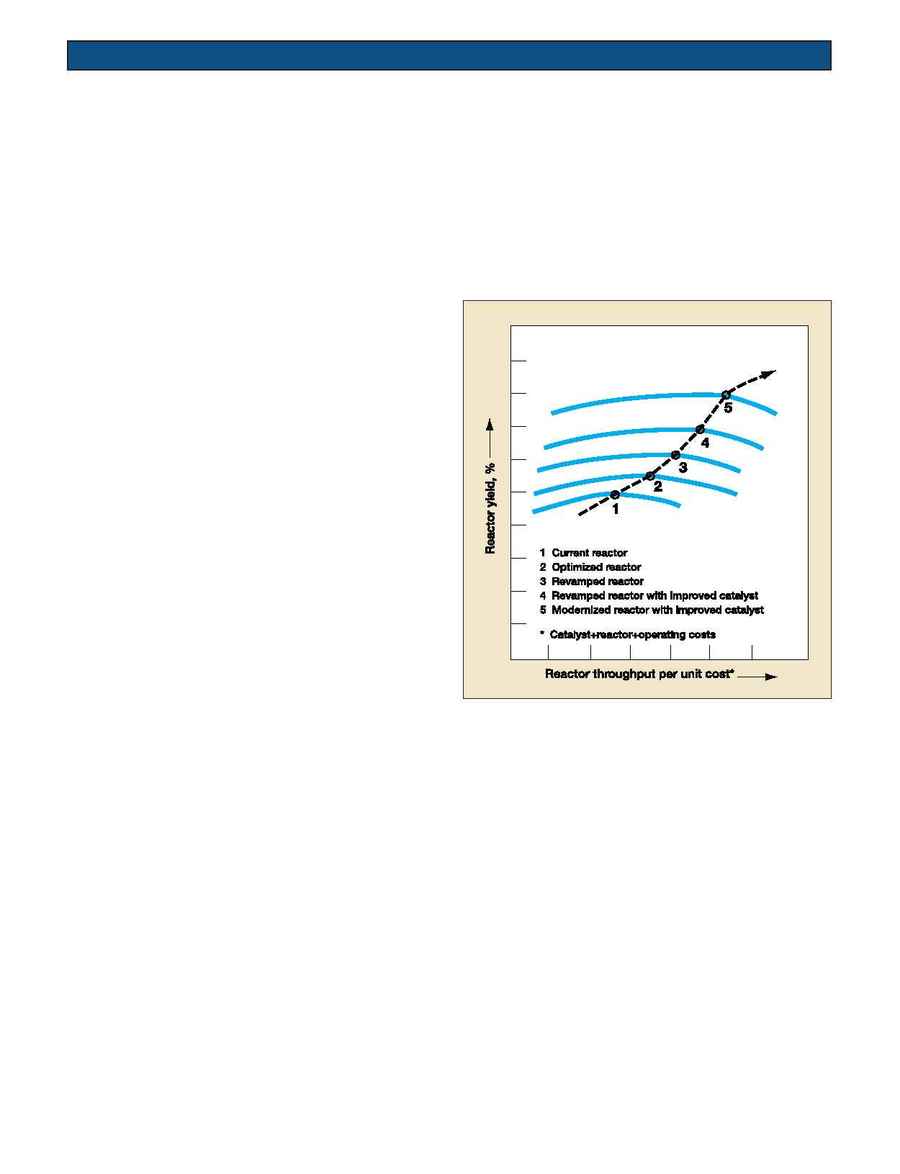
HYDROCARBON PROCESSING / JULY 1999
S. Dutta
and R. Gualy, GTC Technology Corp.,
Houston, Texas
M
any commercially available predictive mod-
els focus on improving the entire processing
unit. Very few applications concentrate on the
reactor within the processing unit. In fact, the eco-
nomical, profitable management of petrochemical and
refining facilities is largely based on the design and
operation of processing reactors. Traditionally, reactor
conditions are set, and it runs. Optimization opportu-
nities are missed, because the HPI facility does not
focus on refining reactor performance in conjunction
with other upgrades and modernization changes made
within the processing unit. Several examples describe
the key features of a general model and how to apply
it when re-evaluating, optimizing, revamping and mod-
ernizing HPI reactor.
Unseen opportunities.
Very few refineries have
examined and developed in-depth modeling tools for
process reactors. Conversely, several petrochemical pro-
ducers have developed very reliable reactor models,
while others still use simple calculation methods when
optimizing processing operations.
Developing models for refinery reactors with classi-
cal reaction engineering is cumbersome. It is a com-
plex problem due to the many non-stoichiometric reac-
tions involved and very large number of components
and pseudo-components used in traditional simula-
tions. In-house reactor models are typically based on
accumulated experience and operating databases. Such
models are totally empirical in nature, applicable to
very specific feedstocks and designs and predict per-
formance within very limited operating ranges.
These models fail when there are variations in the
feedstock quality or composition, increased demand for
productivity, or changes are necessary to produce new
products. Thus, the refiner, relying on past experience
and old databases, is forced to use intuitive and non-
quantifiable tools.
Current predictive models for cost-effective opera-
tion of a refinery or a petrochemical plant do not con-
sider optimizing the reactor. Instead, pseudo-optimized
plant conditions are evaluated based on the changes
from other units, products, prices and feedstocks. If the
reactor operation could be evaluated and optimized in
addition to these variables, facility profits could be
maximized.
The situation is even more critical when revamp or
modernization is required for an existing production
unit. Using existing and often old designs severely lim-
its the scope of revamp and modernization projects and
does not offer the best chance for success. In today's
increasingly competitive operations, this situation is
no longer feasible.
With better characterization of feedstocks and prod-
ucts, and advent of high-speed computation, a general
reactor modeling package, applying the classical
approach, can now be built. It is applicable to both
refineries and petrochemicals. Such a program can be
readily applied or customized to fit varying demands
of revamp and modernization projects. More than ever,
refiners must adopt a petrochemical mindset and move
rapidly in that direction.
General reactor model
improves HPI applications
Applying new tools, refiners can
optimize revamp, and modernize
existing process units
Fig. 1. Schematic of reactor improvement steps.
M
MA
AS
SS
S T
TR
RA
AN
NS
SF
FE
ER
R A
AN
ND
D C
CA
AT
TA
AL
LY
YS
ST
TS
S
